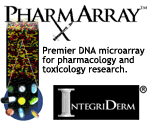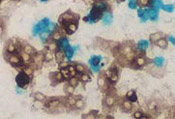 |
||
|
|
||
 Partners:    
|
Intracellular Receptors | Cell Surface Receptors Cells in a multicellular organism must communicate with one another in order to direct and regulate growth, development and organization. Animal cells communicate by secreting chemicals that signal to distant cells, display cell surface chemicals that influence other cells in direct physical contact, and communicate directly via porous cellular junctions called gap junctions. Endocrine signalling occurs when substances (hormones) are secreted by cells and travel in the bloodstream to distant target cells. In paracrine signalling, cells secrete local chemical mediators that act only on cells in the immediate environment. Paracrine signalling molecules are rapidly internalized, destroyed or immobilized such that their effects can be limited to the local environment. Synaptic signalling occurs when molecules are released vesicles at specialized neuronal cell junctions called synapses. The molecules, neurotransmitters, diffuse across the synaptic cleft and act only on the postsynaptic target cell. Protein receptor molecules on or within the target cells bind to the hormone, paracrine or neurotransmitter and a response is initiated. Often the same molecules are endocrine, paracrine or neurotransmitter, the differences lie in the rapidity and selectivity of the delivered signal. Intracellular receptors Cell Surface receptors Catalytic receptors-- These receptors behave as enzymes when activated by a specific ligand. Most of these have a cytoplasmic catalytic region that behaves as a tyrosine kinase. Target proteins are phosporylated at specific tyrosine residues thus changing their activation state. The insulin receptor functions in this way. G-protein linked receptors-- When bound to a specific ligand these receptors indirectly activate or inactivate a separate plasma membrane bound enzyme or ion channel. The interaction between the receptor and the affected enzyme or ion channel is mediated by a GTP binding protein. G-protein linked receptors initiate a cascade of chemical events within the target cell that usually alter the concentration of small intracellular messengers such as cAMP or inositol triphosphate. These intracellular messengers in turn alter the behavior of other intracellular proteins. cAMP levels affect cells by stimulating cyclic AMP-dependent protein kinase to phosphorylate specific target proteins. Calcium levels modify the activity of certain enzymes by binding to the calcium binding protein calmodulin that then activates target proteins. The effects of all these second messengers are rapidly reversible when the extracellular signal is removed. The response of cells to external signals initiates signalling cascades that can greatly amplify and regulate various inputs. |
|
|
|
||